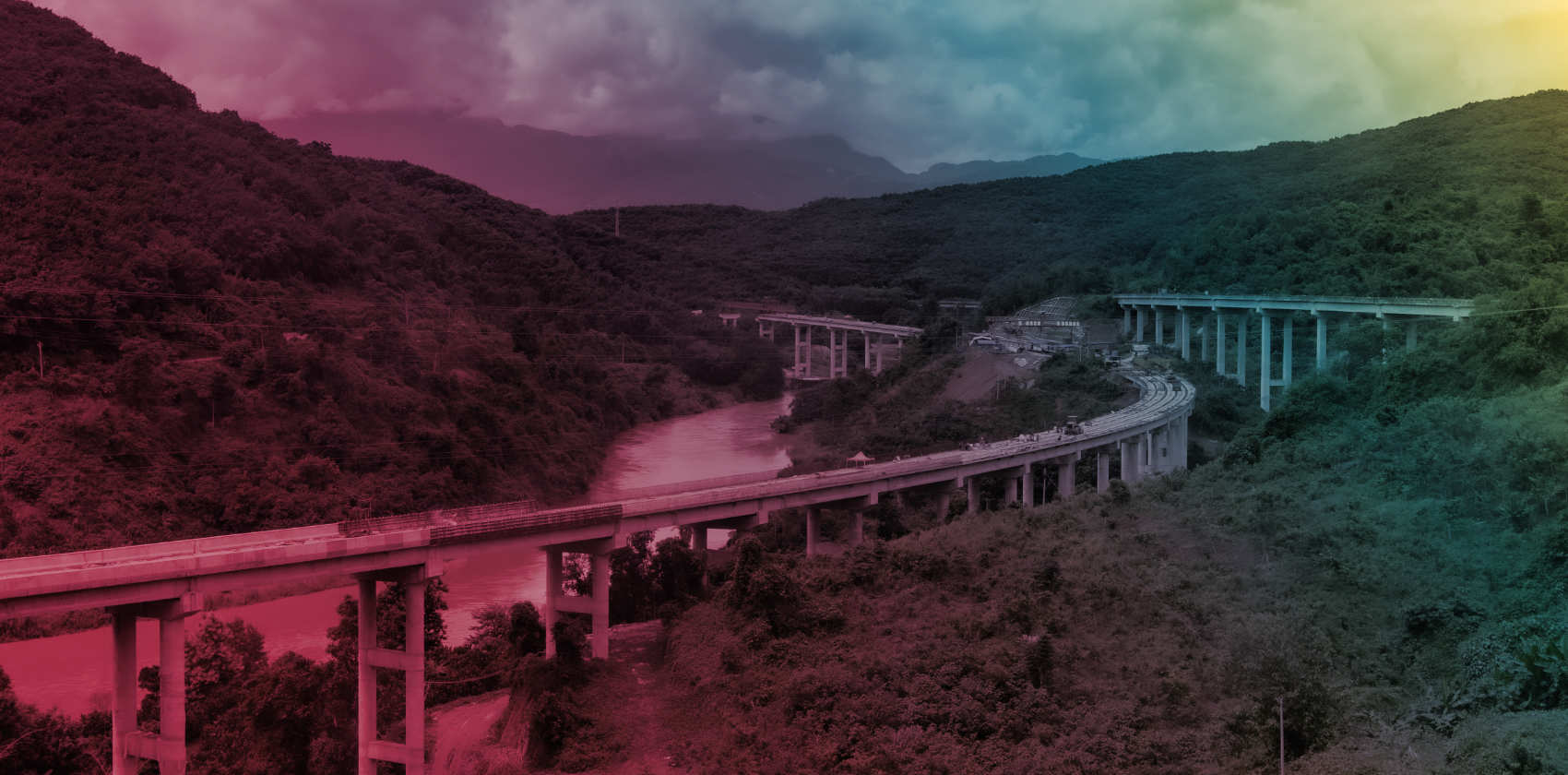
The Singapore International Commercial Court in the Context of the Belt and Road Initiative
2.22k
Navigating the Seas of International Commercial Disputes
This article offers a practitioner’s perspective on China’s ambitious Belt and Road Initiative, as well as how and why the Singapore International Commercial Court is well positioned to play a bigger role in BRI projects.
I. Introduction
- It was the winter of 1431. The sea beyond the harbour was completely covered by more than 300 “Treasure Ships”, each four-decks tall, the largest of which measuring 400 feet long and 160 feet wide. Over 30,000 people, including a crew of 28,000 destined for travel – sailors, cooks, doctors, repairmen, protocol officers for official receptions, interpreters of foreign languages, astrologers and astronomers who could read the stars – tarried every which way, rowing to the ships in boats, loading on equipment, goods, gifts, silks, ammunition, food and water. Admiral Zheng He contemplated the scene, bustling with life before him, as he gets set for his seventh and final voyage across the seas.
- In all his major official maritime missions, Admiral Zheng and his massive fleet had been to Southeast Asia, South Asia, Central Asia, Australia, New Zealand, Antarctica, Africa and even the Americas, the daunting stateliness of it approaching had been described as rising shadows:1Lom Harshni Chauhan, “Zheng He: The forgotten voyager” (19 January 2016), The Hindu https://www.thehindu.com/thread/arts-culture-society/article8120894.ece.“As the shadow rises, it breaks into a cloud of tautly ribbed sail, aflame in the tropical sun. With relentless determination, the cloud draws ever closer, and in its fiery embrace an enormous city appears. A floating city, like nothing the world has ever seen before … stretched across miles of the Indian Ocean in terrifying majesty is the armada of Zheng He, admiral of the Imperial Ming Navy.” – China’s Great Armada, National Geographic, June 2005.
- Yet a profound mystery remained. Why had China not attempted to dominate and colonise the weaker countries which Admiral Zheng had travelled to in all the 28 years of his sea voyages like the European countries did, when it clearly had the power and means to do so? Instead, what the world remembers of the Admiral’s great navigational journeys were campaigns of peace, friendship, cultural exchange and even trade alliances.
- The lasting philosophy of the way of the Chinese continues today, as can be seen from the Belt and Road Initiative (BRI), a global development strategy proposed by the Chinese government in 2013, which focuses on connectivity and cooperation through infrastructure and developments spanning across countries from Southeast Asia to Eastern Europe and Africa.2Lily Kuo & Niko Kommenda, “What is China’s Belt and Road Initiative?” (30 July 2018), The Guardian https://www.theguardian.com/cities/ng-interactive/2018/jul/30/what-china-belt-road-initiative-silk-road-explainer. Widely regarded as China’s grand internationalisation and opening up policy, the BRI has even been incorporated into the Constitution of the Chinese Communist Party.3“The Constitution of the Chinese Communist Party”, Xinhua News Agency, http://www.xinhuanet.com//english/download/Constitution_of_the_Communist_Party_of_China.pdf. The sheer size of the economic activities undertaken as part of the BRI has generated tremendous needs for cross-border dispute settlement.
- The establishment of the Singapore International Commercial Court (SICC) in 2015 has put Singapore in good stead to tap on the myriad opportunities offered through the BRI in the realm of international commercial dispute resolution. With its combination of international expertise and commercially focused rules, the SICC has proven to be a viable forum over the years with a good share of the international judicial business, especially where parties are seeking enforcement in Singapore.4“An International Focus (Interview with Sir Bernard Eder)” (21 December 2020), International Swaps and Derivatives Association, https://www.isda.org/a/XgjTE/Interview-with-Sir-Bernard-Eder-December-2020.pdf.
- It is against this background that we ask ourselves if more can be done in capturing the Chinese market, through a deeper understanding of the Chinese way of dispute resolution and a preference for the alternative, and often misunderstood way, of achieving the “middle ground”. The first section of this article highlights the salient facts of the BRI and its genesis and evolution over the years. The second section describes some of the features that are specific to disputes arising in connection with the BRI. The third and final section puts forth a few suggestions on how the SICC can better position itself to play a bigger role in BRI projects.
II. The Genesis and Evolution of the BRI
- The objective of the BRI is to promote connectivity by mapping more efficient trade routes, through the creation of an infrastructure network including transportation hubs, power generation plants, and telecommunication networks.5Lily Kuo & Niko Kommenda, supra note 2. The initiative was originally set to cover nearly 70 countries and three billion people, constituting 60 per cent of the world population and 30 per cent of the world’s GDP, and requires up to US$6 trillion of investment by 2030.6David Li & Fajar Ibnu Ramadhan, “Indonesia poised to benefit as China’s Belt and Road turns green” (22 June 2018), The Jakarta Post, https://www.thejakartapost.com/academia/2018/06/22/indonesia-poised-to-benefit-as-chinas-belt-and-road-turns-green.html.
- The BRI began in 2013 when President Xi Jinping announced the creation of the Silk Road Economic Belt, the 21st Century Maritime Silk Road, and the Asian Infrastructure Investment Bank (AIIB) for the funding of BRI Projects.7Nadège Rolland, “A Concise Guide to the Belt and Road Initiative” (11 April 2019), The National Bureau of Asian Research, https://www.nbr.org/publication/a-guide-to-the-belt-and-road-initiative/. Further down the road, the Chinese government announced the creation of a US$40 billion Silk Road Fund in 2014, and various national Chinese ministries jointly issued a fundamental vision statement which announced the concept of the “One Belt, One Road” in March 2015.8Ibid. The vision statement,9“Vision And Actions On Jointly Building Silk Road Economic Belt And 21st-Century Maritime Silk Road” (30 March 2015), Belt and Road Portal, https://eng.yidaiyilu.gov.cn/qwyw/qwfb/1084.htm. otherwise known as the V&A, listed five priority areas of cooperation for the BRI.
- The V&A was widely regarded as the blueprint and DNA for the BRI, but rather than prescribing an operational road map, it merely identified priority areas for cooperation in broad terms.10Grzegorz Stec, “China’s Belt and Road Initiative is Neither a Strategy, Nor a Vision. It is a Process” (February 2018), European Institute for Asian Studies, https://www.eias.org/wp-content/uploads/2016/03/EU_Asia_at_a_Glance_Stec_BRI_2018-1.pdf. Whilst the V&A expresses the need for trade and investment facilitation, how this should be carried out is left to the determination of state actors, leaving tremendous room for competing interests between provincial governments and interest groups to emerge. The inherent want of clarity of the BRI objectives and terms of engagement, coupled with the lack of central government oversight, may explain some of the problems confronting BRI projects and recent talks of a “rethink” strategy.
- It is then no surprise that one of the most frequently asked questions is whether there is a map which listed all the belt and road countries. The simple answer is that no official map exists of the BRI.11Nadège Rolland, supra note 7. In fact, Beijing prohibited the production of BRI maps in 2017.12Minh Phuong Vu, “We Are Overestimating the Belt and Road Initiative and Beijing’s Capability to Do Everything” (31 January 2021), Australian Institute of International Affairs, https://www.internationalaffairs.org.au/australianoutlook/we-are-overestimating-the-belt-and-road-initiative-and-beijings-capability-to-do-everything/. However, precisely because there are no clear geographical boundaries defining the BRI, this also means that anyone who wishes to befriend China can find a way to benefit from this initiative. Much like how Admiral Zheng’s voyages were mapped out at sea in sheer vastness rather than axiomatic confines,13As China expert Professor Edward Friedman of the University of Wisconsin-Madison once put it, “Zheng He was an admiral in the time of ‘empire’, when there were no boundaries, no frontier limits.” Zoe Murphy, “Zheng He: Symbol of China’s ‘Peaceful Rise’” (28 July 2010), BBC News, https://www.bbc.com/news/world-asia-pacific-10767321. there is no “one Belt” nor “one Road” today. Rather, there are three land routes and two maritime routes – and together, these BRI routes constitute six international economic corridors.14“One Belt One Road: PPP Alchemy – is the Silk Road paved in Gold?” (21 December 2016), Dentons, https://www.dentons.com/en/insights/guides-reports-and-whitepapers/2016/december/22/one-belt-one-road-ppp-alchemy-is-the-silk-road-paved-in-gold.
III. Features of BRI Disputes
- Before going on to consider the unique features of BRI disputes and the parties involved, one has to cross the initial hurdle of defining what exactly constitutes the BRI. Rather than a meticulously thought-out grand strategy, it would appear that the BRI is in fact more akin to a scaling up of the many existing bottom-up projects led by provincial governments and state-owned enterprises. Since the decision-making process for BRI projects is decentralised, Chinese state-owned enterprises are largely responsible for implementing these projects. Chinese state-owned enterprises are in fact not just project implementers, but very much responsible for generating the demand for partnership opportunities in host states. Moreover, the reality on the ground is that the decision-making process of such Chinese state-owned enterprises is based on both economic and political motivations.15Wang Jiangyu, “The Political Logic of Corporate Governance in China’s State-Owned Enterprises” (2014), Cornell International Law Journal, Vol. 47, No. 3, Article 5 at pp 651 and 652.
- A first feature of BRI disputes would be that Chinese parties tend to be relatively less concerned with costs or rights of appeal as a result of the financial muscle that they can wield. Instead, the Chinese are highly particular about (the colloquially termed) “face-saving”, and this affects almost every aspect of their interaction with external parties. It flows from this that confidentiality is of great importance in the resolution of any conflict in BRI contracts. There are tremendous implications for the management teams of state-owned enterprises if this aspect is not well-managed.
- Further, as the esteemed Confucius expounded: “Achieving the golden mean is the highest level of virtue.” – the doctrine of the Golden Mean continues to hold true for most Chinese today. This translates simply into the avoidance of extremes and finding footing in the balance between the Yin and the Yang. Typically, Chinese parties prefer a less adversarial approach when it comes to negotiating contracts and give priority to amicable and diplomatic discussions.16Betsy Neidel, “Negotiations, Chinese Style. China Business Review” (1 November 2020), https://www.chinabusinessreview.com/negotiations-chinese-style/. This approach carries on whenever disputes arise post-contract.17Ibid. Chinese parties prefer to deal with disagreements in a low-profile manner involving lengthy periods of mutual discussions and negotiations. Where discussions veer towards issues such as inserting a formal dispute resolution forum or mechanism, Chinese parties tend not to go into granularity at the contracting phase, bordering on having a lack of focus on dispute resolution. Instead, a lot more attention is directed at ensuring political process18Ibid. and therefore, there would be a greater need to read the unspoken gradations encircling the entire process. As George Yeo, then-Minister of Foreign Affairs put it:19George Yeo, “George Yeo (Singapore, Minster of Foreign Affairs)” (3 October 2017), Digital Narratives of Asia at p 4.“Specifically with China, the signals are subtle, the process of accommodation takes time. One must be patient. One must be a good listener, and pick up nuances along the way, accepting that they will also do the same on their side.”
- A second feature of BRI disputes is the involvement of the so-called “BRI countries”. These are essentially countries which are currently involved in a proportionately larger number of BRI projects. BRI countries tend to be developing countries or frontier markets, who are often not parties to the Hague Convention, and whose jurisprudence and prescribed legal rules are often in comparatively nascent stages. An apt example would be Myanmar. In Myanmar, the written laws are often unclear and in a local language rather than in English, and customary practice is occasionally different from what may be expressly stated.20Lauren O’Neil, “Navigating weak rule of law in South-east Asia” (11 December 2015), LexisNexis, https://www.lexisnexis.com.au/en/insights-and-analysis/rule-of-law/2015/11dec2015-navigating-weak-rule-of-law-in-south-east-asia. Some of these countries are accustomed to viewing China as the “big brother” due to the alternative to western funding which it provides, and many bear unusually large debts to Chinese investors over basic infrastructural projects.21Lily Kuo & Niko Kommenda, supra note 2.
- A third and final feature of BRI disputes is the nature of the investments in question. BRI projects often involve the construction or funding of large-scale infrastructure by Chinese parties.22“China’s Belt and Road Initiative in the Global Trade, Investment and Finance Landscape” in OECD Business and Finance Outlook 2018 (OECD Publishing, 2018). Assets connected to such projects would be geographically located in the host country. If a dispute or problem should arise, for example, where the host state administration refuses to honour contractual commitments, one can imagine how protection clauses crafted within the original agreement may not be effective or sufficient. Chinese parties have thus generally regarded political influence as being a far more efficacious tool in resolving differences.23David O. Shullman, “Protect the Party: China’s growing influence in the developing world” (22 January 2019), The Brooking Institution, https://www.brookings.edu/articles/protect-the-party-chinas-growing-influence-in-the-developing-world/ To the Chinese, this would be a given. The flexing of political muscle existed even when the many seafaring voyages of Admiral Zheng was to demonstrate the vastness of China’s economic and dynastic power, rather than to forcibly dominate.
IV. The Role of the SICC
- How then can the SICC better position itself to play a role in BRI disputes? First, the SICC can accord parties greater autonomy over the choice of the adjudicator or the composition of a neutral tribunal. If the SICC intends to make itself more attractive to parties who have settled into the comfort of resorting to international arbitration (wherein they are allowed to appoint their own arbitrator), it follows that the SICC should allow BRI parties to indicate at the very least the nationality of the judges to be appointed at the contractual drafting stages. Subsequently, the SICC should also uphold the parties’ intentions.
- In a similar vein, the SICC could also increase the number of international judges from BRI countries with deep expertise and experience in major areas of BRI investments. The SICC taps on the sterling reputation of the Singapore judiciary in terms of quality judgments and impartiality according to the rule of law.24An International Focus (Interview with Sir Bernard Eder), supra note 4. The appointment of prominent judges from China and other BRI countries on the SICC panel will certainly help to move it away from the perception that it is a largely “westernised” or foreign construct.
- Secondly, the SICC could allow parties to contractually mandate the confidentiality of any dispute resolution proceedings and/or outline special circumstances under which automatic confidentiality would apply. As it stands today, SICC proceedings take place in open court with parties having the option to apply for proceedings to be confidential. The ultimate decision of whether to grant the confidentiality order is made by the SICC based on various factors. Guaranteeing confidentiality to parties right from the outset would greatly benefit Chinese parties as Chinese state-owned enterprises would rarely want the fact that it is involved in a court dispute to be publicised.
- Thirdly, the enforceability of SICC judgements should be enhanced as much as possible. Arbitration has remained attractive for BRI disputes because of the ease of enforcement of arbitral judgments pursuant to the New York Convention.25Seok Hui Lim, Michele Park Sonen & Qian Wu, “Navigating the Dispute Resolution Landscape for BRI Projects: The Advantages of Singapore and SIAC” (21 September 2021), International Comparative Legal Guides, https://iclg.com/cdr-essential-intelligence/1100-cdr-the-belt-and-road-initiative-2021/9-navigating-the-dispute-resolution-landscape-for-bri-projects-the-advantages-of-singapore-and-siac. This ease of enforcement has a direct impact on the adjudication mechanism chosen by Chinese parties. If a final order in favour of a Chinese party must be enforced in a foreign jurisdiction, then that process must be seamless, low in profile, and with the usual Chinese dignity.
- As it stands today, there are various avenues through which SICC judgments may be enforced in foreign jurisdictions as Singapore High Court orders. As more countries, especially BRI countries, sign and ratify the Hague Convention on Choice of Court Agreements, we inch towards the entrenchment of the SICC as a preferred choice for BRI disputes.
V. Conclusion
- International commercial courts have been created around the world, including the China International Commercial Court (CICC)26“A Brief Introduction of China International Commercial Court” (28 June 2018), China International Commercial Court, http://cicc.court.gov.cn/html/1/219/193/195/index.html. in China itself. Nevertheless, it is argued that China is unlikely to pressurise countries involved in BRI projects to submit to the CICC. This is because China realises the need to internationalise the BRI and move it away from the perception that it is purely Chinese propaganda. It is for the very same reason that the AIIB and Silk Road Fund have both moved towards co-funding of BRI projects with the World Bank and other multilateral development banks.27“How is Belt and Road being funded?” (2016), Week In China, https://www.weekinchina.com/chapter/belt-and-road/how-is-belt-and-road-being-funded/.
- Singapore already has many winning factors. It shares deep economic relations and has an excellent reputation with China. Singapore has been China’s largest foreign investor and China has been Singapore’s largest trading partner since 2013.28Justin Ong, “Singapore business chamber in China key to relations between the two countries: Alvin Tan” (14 February 2021), The Straits Times, https://www.straitstimes.com/singapore/singapore-business-chamber-in-china-key-to-relations-between-the-2-countries-minister-of. Singapore was also the largest foreign investment destination for China along the Belt and Road in 2018, capturing close to 23 per cent of the total investment outflow from China to BRI countries.29Ibid. Furthermore, Singapore is strategically located amidst many Asian nations in the region which are BRI countries.
- The SICC has opened the doors of Singapore to resolving international commercial disputes and is better placed than ever to position itself as the most attractive forum for the resolution of BRI disputes by taking calculated steps in the right direction.
Endnotes
| ↑1 | Lom Harshni Chauhan, “Zheng He: The forgotten voyager” (19 January 2016), The Hindu https://www.thehindu.com/thread/arts-culture-society/article8120894.ece. |
|---|---|
| ↑2 | Lily Kuo & Niko Kommenda, “What is China’s Belt and Road Initiative?” (30 July 2018), The Guardian https://www.theguardian.com/cities/ng-interactive/2018/jul/30/what-china-belt-road-initiative-silk-road-explainer. |
| ↑3 | “The Constitution of the Chinese Communist Party”, Xinhua News Agency, http://www.xinhuanet.com//english/download/Constitution_of_the_Communist_Party_of_China.pdf. |
| ↑4 | “An International Focus (Interview with Sir Bernard Eder)” (21 December 2020), International Swaps and Derivatives Association, https://www.isda.org/a/XgjTE/Interview-with-Sir-Bernard-Eder-December-2020.pdf. |
| ↑5 | Lily Kuo & Niko Kommenda, supra note 2. |
| ↑6 | David Li & Fajar Ibnu Ramadhan, “Indonesia poised to benefit as China’s Belt and Road turns green” (22 June 2018), The Jakarta Post, https://www.thejakartapost.com/academia/2018/06/22/indonesia-poised-to-benefit-as-chinas-belt-and-road-turns-green.html. |
| ↑7 | Nadège Rolland, “A Concise Guide to the Belt and Road Initiative” (11 April 2019), The National Bureau of Asian Research, https://www.nbr.org/publication/a-guide-to-the-belt-and-road-initiative/. |
| ↑8 | Ibid. |
| ↑9 | “Vision And Actions On Jointly Building Silk Road Economic Belt And 21st-Century Maritime Silk Road” (30 March 2015), Belt and Road Portal, https://eng.yidaiyilu.gov.cn/qwyw/qwfb/1084.htm. |
| ↑10 | Grzegorz Stec, “China’s Belt and Road Initiative is Neither a Strategy, Nor a Vision. It is a Process” (February 2018), European Institute for Asian Studies, https://www.eias.org/wp-content/uploads/2016/03/EU_Asia_at_a_Glance_Stec_BRI_2018-1.pdf. |
| ↑11 | Nadège Rolland, supra note 7. |
| ↑12 | Minh Phuong Vu, “We Are Overestimating the Belt and Road Initiative and Beijing’s Capability to Do Everything” (31 January 2021), Australian Institute of International Affairs, https://www.internationalaffairs.org.au/australianoutlook/we-are-overestimating-the-belt-and-road-initiative-and-beijings-capability-to-do-everything/. |
| ↑13 | As China expert Professor Edward Friedman of the University of Wisconsin-Madison once put it, “Zheng He was an admiral in the time of ‘empire’, when there were no boundaries, no frontier limits.” Zoe Murphy, “Zheng He: Symbol of China’s ‘Peaceful Rise’” (28 July 2010), BBC News, https://www.bbc.com/news/world-asia-pacific-10767321. |
| ↑14 | “One Belt One Road: PPP Alchemy – is the Silk Road paved in Gold?” (21 December 2016), Dentons, https://www.dentons.com/en/insights/guides-reports-and-whitepapers/2016/december/22/one-belt-one-road-ppp-alchemy-is-the-silk-road-paved-in-gold. |
| ↑15 | Wang Jiangyu, “The Political Logic of Corporate Governance in China’s State-Owned Enterprises” (2014), Cornell International Law Journal, Vol. 47, No. 3, Article 5 at pp 651 and 652. |
| ↑16 | Betsy Neidel, “Negotiations, Chinese Style. China Business Review” (1 November 2020), https://www.chinabusinessreview.com/negotiations-chinese-style/. |
| ↑17 | Ibid. |
| ↑18 | Ibid. |
| ↑19 | George Yeo, “George Yeo (Singapore, Minster of Foreign Affairs)” (3 October 2017), Digital Narratives of Asia at p 4. |
| ↑20 | Lauren O’Neil, “Navigating weak rule of law in South-east Asia” (11 December 2015), LexisNexis, https://www.lexisnexis.com.au/en/insights-and-analysis/rule-of-law/2015/11dec2015-navigating-weak-rule-of-law-in-south-east-asia. |
| ↑21 | Lily Kuo & Niko Kommenda, supra note 2. |
| ↑22 | “China’s Belt and Road Initiative in the Global Trade, Investment and Finance Landscape” in OECD Business and Finance Outlook 2018 (OECD Publishing, 2018). |
| ↑23 | David O. Shullman, “Protect the Party: China’s growing influence in the developing world” (22 January 2019), The Brooking Institution, https://www.brookings.edu/articles/protect-the-party-chinas-growing-influence-in-the-developing-world/ |
| ↑24 | An International Focus (Interview with Sir Bernard Eder), supra note 4. |
| ↑25 | Seok Hui Lim, Michele Park Sonen & Qian Wu, “Navigating the Dispute Resolution Landscape for BRI Projects: The Advantages of Singapore and SIAC” (21 September 2021), International Comparative Legal Guides, https://iclg.com/cdr-essential-intelligence/1100-cdr-the-belt-and-road-initiative-2021/9-navigating-the-dispute-resolution-landscape-for-bri-projects-the-advantages-of-singapore-and-siac. |
| ↑26 | “A Brief Introduction of China International Commercial Court” (28 June 2018), China International Commercial Court, http://cicc.court.gov.cn/html/1/219/193/195/index.html. |
| ↑27 | “How is Belt and Road being funded?” (2016), Week In China, https://www.weekinchina.com/chapter/belt-and-road/how-is-belt-and-road-being-funded/. |
| ↑28 | Justin Ong, “Singapore business chamber in China key to relations between the two countries: Alvin Tan” (14 February 2021), The Straits Times, https://www.straitstimes.com/singapore/singapore-business-chamber-in-china-key-to-relations-between-the-2-countries-minister-of. |
| ↑29 | Ibid. |






